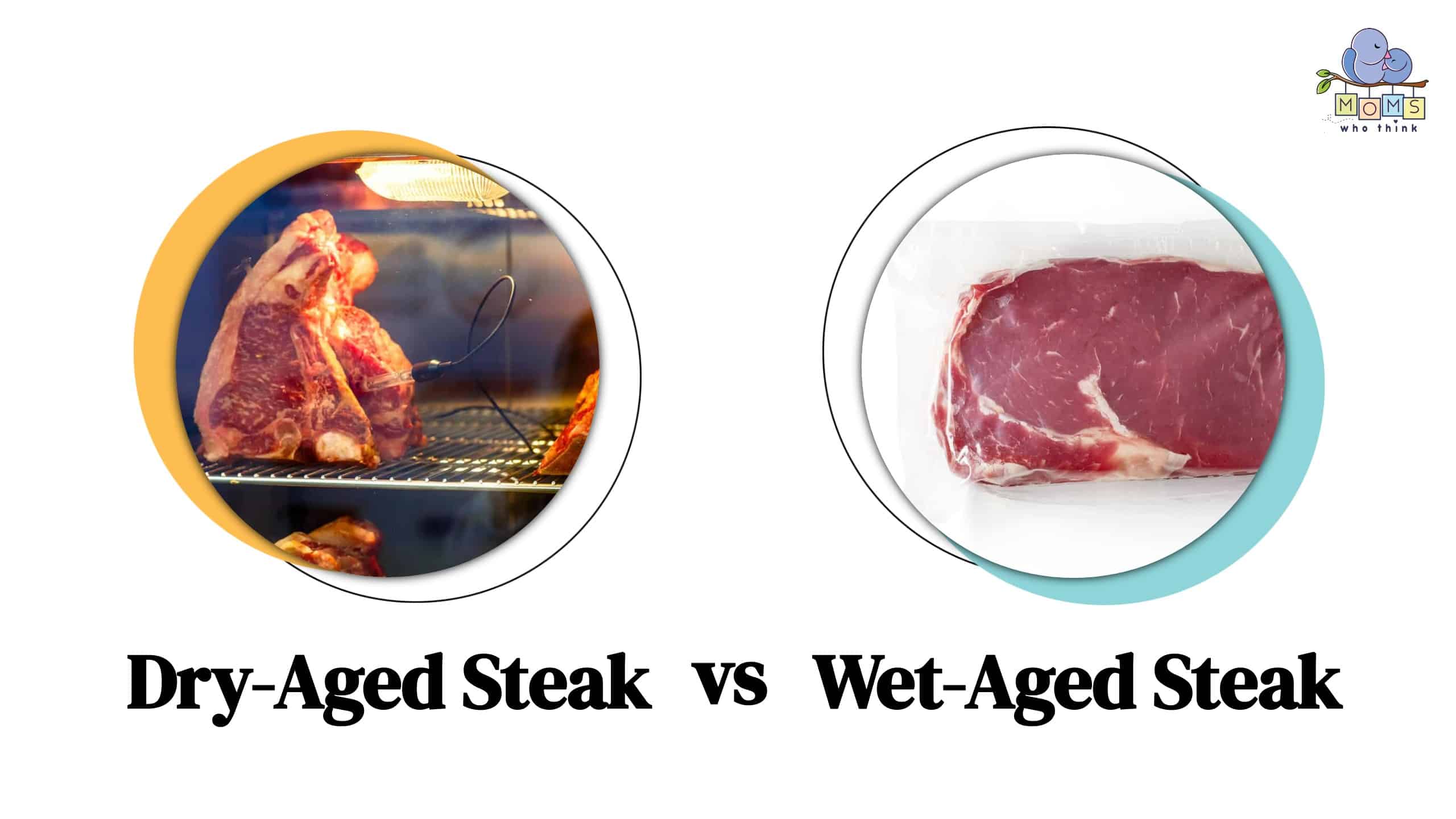If you are an avid steak lover, you have likely heard the terms “dry aged” and “wet aged.” However, do you know the differences between these two forms of aging meat? Both ways of beef preparation can produce very tender cuts of delicious meat. However, there are a few important differences between dry-aged and wet-aged steak. This post will examine the differences and discuss which aging process is better.
Dry Aged Vs. Wet Aged: What Is the Difference?
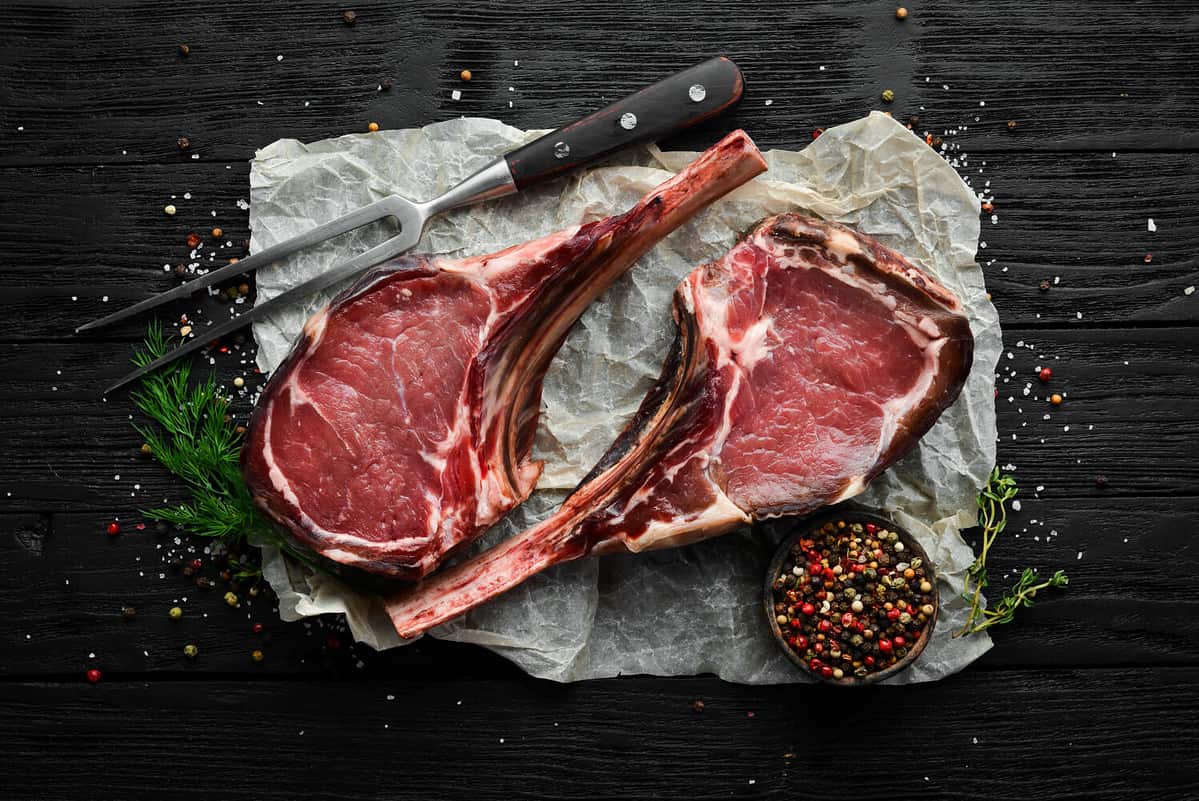
©YARUNIV Studio/Shutterstock.com
The primary difference between dry-aged and wet-aged steaks is their process and resulting flavor. Dry-aged steaks are exposed to the air and dehydrated which concentrates their flavor whereas wet-aged steaks are vacuum-sealed in a bag and refrigerated for several weeks.
The flavor of dry-aged steaks is more complex, sometimes being described as like cheese or even being nutty while wet-aged steaks have a more traditional beef flavor. However, wet-aged steaks return more of their moisture as they're stored in a sealed environment.
Both steaks see an increase in tenderness. Dry aging breaks down connective tissues while wet aging allows the meat's natural enzymes to break down muscle fibers and increase tenderness.
When determining which kind of meat is better for which aging process, you will want to think about the meat's marbling, juiciness, and mass. You will want to look for fattier meat when dry aging your beef. This helps you preserve mass and juice. However, wet aging is better with lean cuts because this type of meat is already lighter. Therefore, the meat will lose even more mass and moisture if you use the dry aging process.
Just How Tender are Dry-Aged and Wet-Aged Steaks?
As stated, the preparation process is the main difference between dry and wet-aged meat. Dry-aged meat takes a significant amount of time to prepare. The process produces the most tender cut of beef you will ever taste, but the amount of time it takes can be consuming for people. In addition, when you dry age, the meat will lose a significant amount of mass. It's also important to remember that the longer a cut of beef is dry-aged, the more flavor and tenderness it will have. The tenderness is often described as butter, you may not even need a knife to cut through the steak!
Wet aging is still a process; however, it takes significantly less time, and you can produce outstanding flavor and tender meat.
Appearance and Characteristic Differences
There are apparent appearance and characteristic differences between dry-aged and wet-aged steak. Dry-aged meats tend to be crusty on the surface. This is because the meat has been sitting out for long periods of time. The process of drying out the steak means the outer surface has to be cut away to get to the edible pieces of meat.
With wet aging steak, the outer surface stays juicy and retains moisture because of the vacuum seal. There is no cutting away the outer surface with wet-aged steak.
Both wet-aging and dry-aging beef produce incredible flavor. However, there is a difference in their taste. Many describe dry-aged meat as having a rich and dense taste because it is more tender than wet-aged meat. Sometimes it is also described as having a nutty flavor. On the other hand, wet-aged beef is described as having a sweet and juicy taste. The flavor is still strong and beefy. However, it also sometimes has a fresh metallic taste.
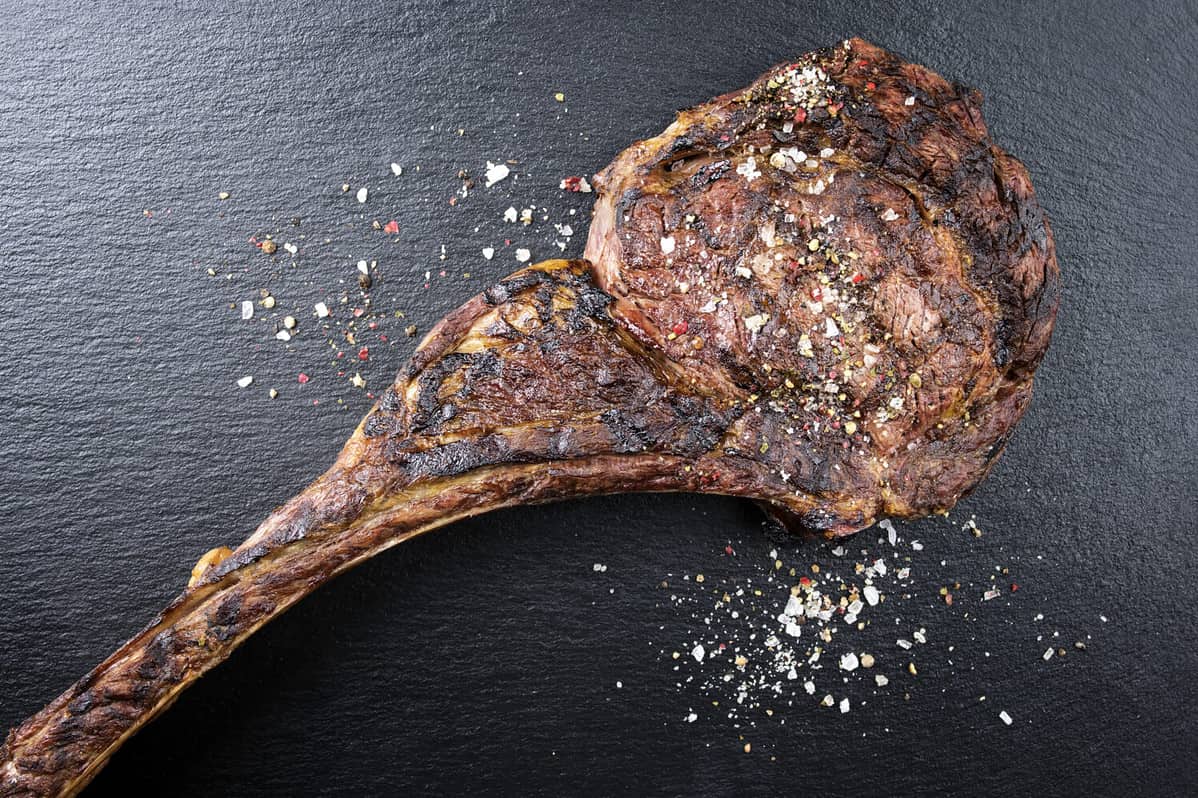
When it comes to wet-aged and dry-aged meat, it is all about personal preference. However, both forms of aging have significant character and appearance differences.
©hlphoto/Shutterstock.com
What Is Dry Aged?
So what exactly does it mean when you use the term dry-aged steak? A dry-aged steak is a cut of meat that has undergone the dry aging process. The dry aging process happens when you take a freshly slaughtered animal and hang the meat in a temperature-controlled environment. Dry aging typically lasts between a few weeks to several months.
Why would somebody use the dry aging process in today's society? For starters, the dry aging process can produce one of the most tender pieces of meat you will ever taste. This happens because when the animal's meat goes through this process, the muscles have time to break down, allowing the meat to tenderize. The steak also produces a more robust flavor; natural enzymes are added to the meat during this process as well.
Downfalls of Dry-Aged Steak
There are two downfalls to the dry aging process. The first downfall is that the longer your meat hangs, the more mass it loses. This is because the juice leaves the meat; when this happens, the mass shrinks. Another downfall of dry aging is the outer part of the meat becomes crusty and old during this aging process. So, because of this, we cannot eat the outer layer. Therefore when you're ready to prepare the meat for eating, you have to cut away the top layer. This adds to even more loss of meat. The downfalls don't seem to deter steak lovers much, though. The taste of dry-aged steak brings many back over and over. To many, the process is worth it to receive the delectable flavor and tenderness that is the result!
Dry aging is a form of aging meat that has existed long before plastics and refrigerators. However, this specific way of preparing aging meat has been perfected over time, with trial and error and learning that temperature-controlled environments are vital to dry aging.
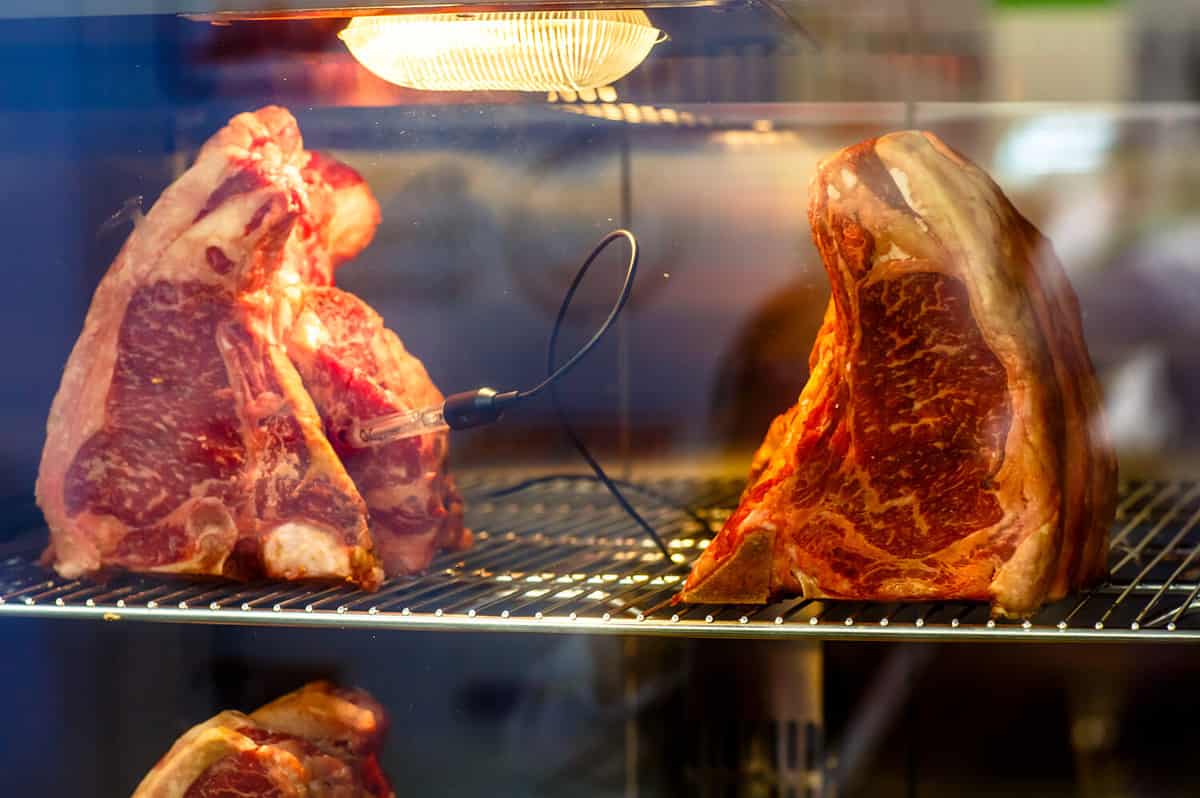
Dry aging produces tender and flavorful meat that many steak lovers enjoy. It is hard to beat the flavor of dry-aged meat.
©Milanchikov Sergey/Shutterstock.com
What Is Wet Aged?
On the flip side, wet aging is a great alternative if you still enjoy an aged cut of meat. This process is meant to cut the aging down. Therefore, wet aging takes a significantly shorter time, and the preparation method differs. Instead of aging your cut of beef in an open-air environment, the butcher stores it in a vacuum-sealed package. Many people prefer this method because it takes a shorter amount of time. Wet-aged meat must only be stored in the refrigerator for 14 days or longer. The degree that is preferred is 35°F.
Downfalls of Wet-Aged Steak
Even though putting steak through the wet-aged process will speed up the aging and produce a tender meat cut, it isn't the same as dry-aged meat. The flavor and tenderness can not quite be replicated with this process, so many people still opt for dry-aged steak.
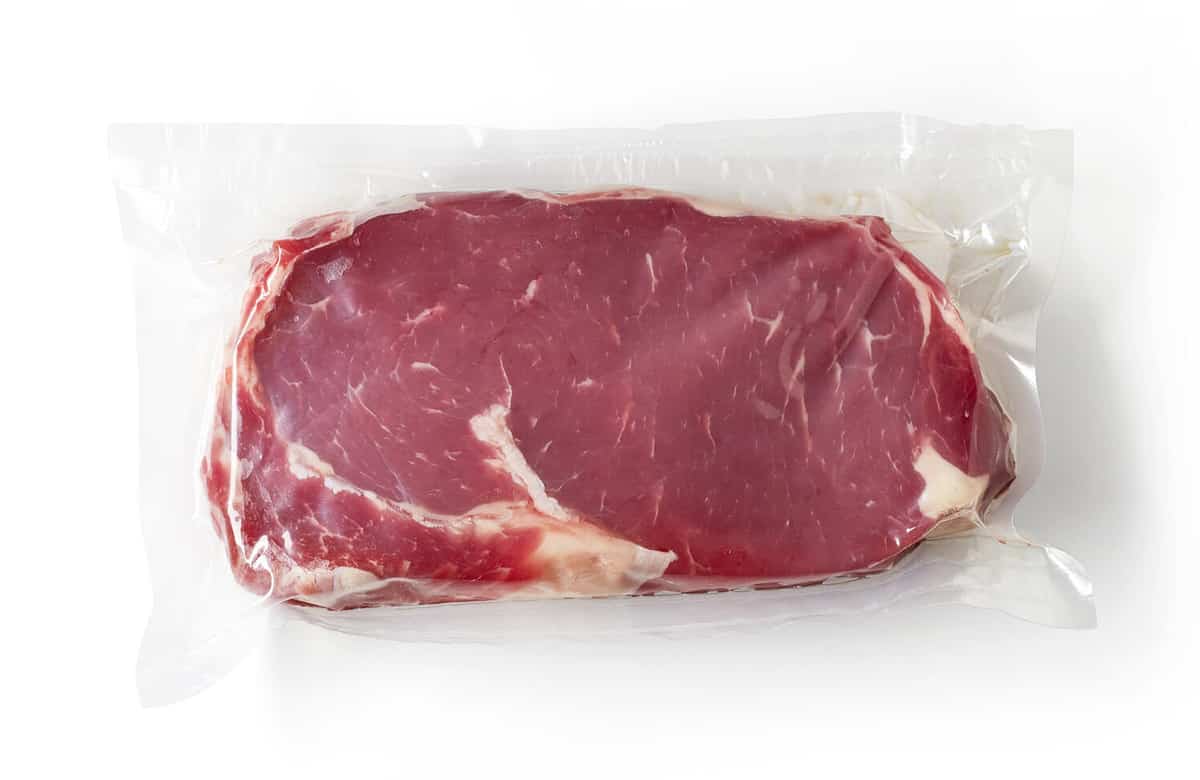
Wet aging is a quicker way to age your meat. It still produces tenderness and a robust, beefy flavor. However, it doesn't take nearly as much time as dry aging does.
©bigacis/Shutterstock.com
Can You Substitute Wet Aged for Dry Aged?
So, because of the flavor difference, can you substitute wet-aged with dry-aged? The answer, in short, is yes. However, you should be prepared for the flavor differences. Wet-aged meat will give you a fresh taste but may be less tender than dry-aged beef. On the other hand, dry-aged meat has a very dense, rich flavor that meat lovers enjoy immensely. Either one is an excellent choice for your meal.
One Final Note
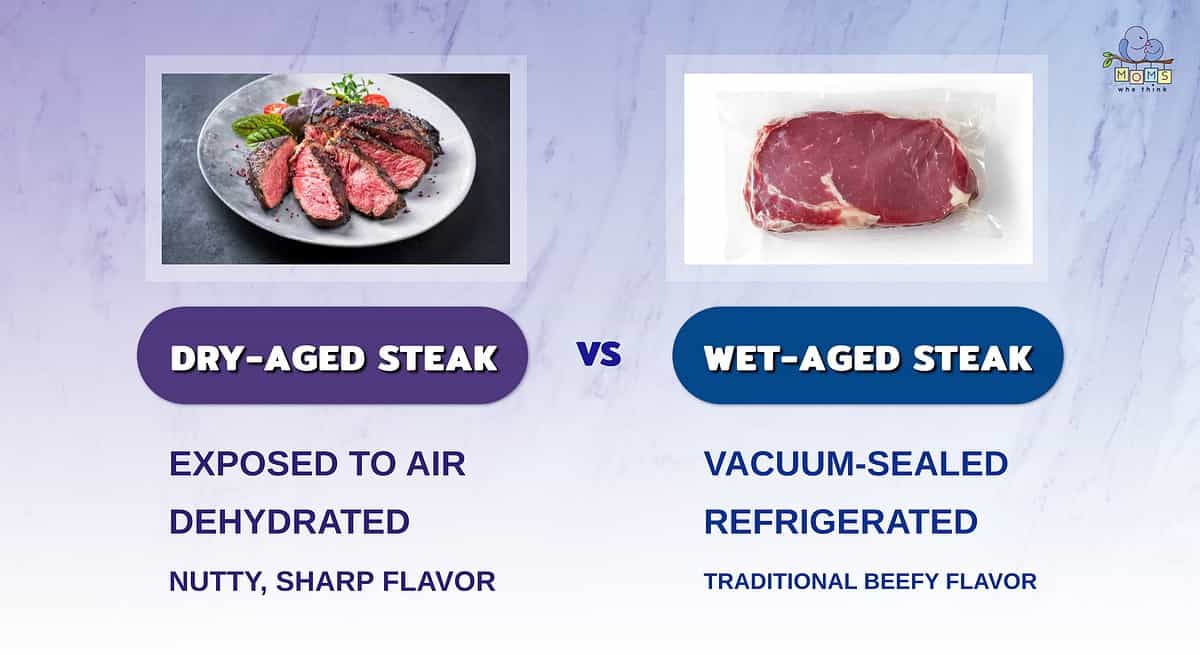
- Dry-aged steaks are exposed to air, while wet-aged steaks are vacuum-sealed. The vacuum sealing is necessary to keep the wet-aged steak from going bad.
- Exposing steak to air in the dry-aging process will dehydrate it. After being vacuum-sealed, a wet-aged steak is put in the fridge. The wet-aging process takes less time than dry-aging.
- Dry-aging a steak produces meat that's nutty and sharp in flavor, with a lot of complexity. A wet-aged steak will retain steak's traditional beefy flavor.
While the preparation methods between dry-aged and wet-aged meat differ, both produce tender and flavorful meats that can be enjoyed in any meal. Whether or not you choose dry-aged or wet-aged is about personal preference. You cannot go wrong with either one. So, the next time you take a trip to your local meat store, ask them about the aging process of their own meats! You may be surprised at what you discover.
Steak Posts
- Flank Steak Vs. Round Steak (momswhothink.com)
- Prime Rib Vs. Steak: What's the Difference? (momswhothink.com)
- Hanger vs. Skirt Steak (momswhothink.com)
- Tomahawk Steak vs. Ribeye (momswhothink.com)
- Chicken Fried Steak vs. Country Fried Steak (momswhothink.com)
Steak Recipes
PrintDry-Aged Steak with Onions and Broccoli
- Yield: 6 servings
Ingredients
6 dry-aged beef tenderloin steaks, cut 1 inch thick (about 1 1/2 pounds total)
1/4 teaspoon salt
1/4 teaspoon black pepper
2 Tablespoons butter
1 small onion, cut into six wedges
1 teaspoon bottled minced garlic (2 cloves)
1 teaspoon dried basil, crushed
1/2 teaspoon dried oregano, crushed
2 Tablespoons whipping cream
6 tablespoons onion or orange marmalade (optional)
Frozen broccoli
Butter to taste
Garlic powder to taste
Instructions
1. Sprinkle meat with salt pepper, set aside.
2. In a large skillet melt butter over medium heat. Add onion and garlic.
3. Cook and stir for 6 to 8 minutes or until onion is tender. Remove onion from skillet.
4. While onion is cooking cook broccoli according to package directions. Drain, coat with butter and sprinkle with garlic powder.
5. Increase heat to medium-high. Add steaks to skillet, cook to desired doneness, turning once. After turning, sprinkle meat with basil and oregano.
6. Remove steaks from skillet, place on serving platter and cover to keep warm.
7. Return onion to skillet heat through. Remove onions from skillet. Remove skillet from heat.
8. Stir in whipping cream, spoon cream over steaks.
9. Top steaks with marmalade (optional). Divide cooked onion wedges among steaks. Serve with garlic buttered broccoli.
- Steak with Mashed ‘Potatoes' Recipe (momswhothink.com)
- Steak and Potato Stir-Fry Recipe (momswhothink.com)
- Oriental Steak Stir-Fry Recipe (momswhothink.com)
- Easy Swiss Steak Recipe (momswhothink.com)
